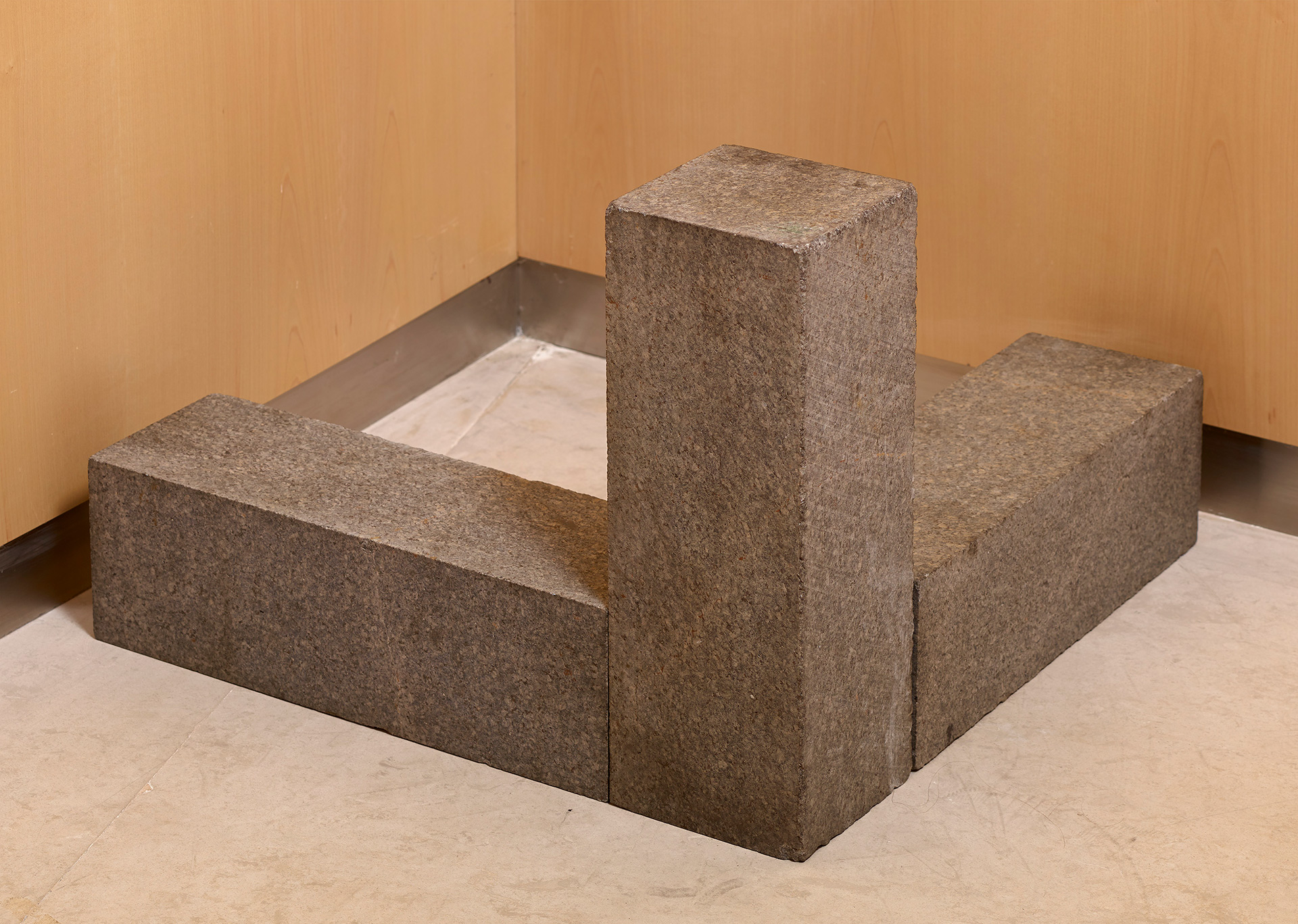
Carl Andre (Quincy, Massachusetts, Estados Unidos, 1935)
Intrine
After a 1987
WORK INFORMATION
Granite 45 × 16 × 15 cm (3 pieces)
The revolutionary creator of a new concept of sculpture, Carl Andre started working at a time when the American art world was dominated by names like David Smith and, albeit to a lesser degree by then, Alexander Calder. Almost immediately, the first reactions to post-World War II expressionism appeared in the form of Pop Art, Land Art and minimalism. Andre was destined to spearhead the latter movement, although his proposals differed significantly from those of his companions in the minimal adventure, such as David Judd and Sol LeWitt.
In 1954 he visited several European countries. One of the most memorable aspects of this journey, almost a rite of passage, was the soul-stirring impact made by the megalithic monument of Stonehenge, an experience that greatly influenced his own path as a sculptor. He followed the clues that Stonehenge provided, such as the importance of integration in the surrounding space, the autonomous expressive capacity of those massive stones and the discovery of a geometry of irregular shapes. Andre also openly professed an admiration for specific artworks like the Romanian artist Brancusi's Endless Column (1937–1938) and for "isms" such as the Constructivism of Tatlin and Rodchenko. Like his entire generation, he was strongly influenced by Merleau-Ponty's famous essay on the Phenomenology of Perception (1945). And we must not forget that Andre was a poet before he became a sculptor.
In offering this more or less orderly assortment of artistic and intellectual references, my intention is merely to underscore the broad scope of Andre's learning and, later on, his artistic production. Almost anything is possible in Andre's sculpture: every material (wood, marble, tin, iron, lead, granite, etc.) and every form or composition have attracted him at some point since launching his career in the mid-1960s.
However, the ultimate goal of his reflection is not to propose a new language—a new formalism, we might call it—but to create the necessary conditions for offering spectators an unprecedented experience. His art appeals to all of the senses: he explicitly urges audiences to walk over his works, listen to the echoes of their footsteps, and touch and smell the surfaces of his creations. Unfortunately, the "art establishment" (museums, galleries, foundations, etc.) does not feel the same way and has deprived us of these sensations in most cases.
Additionally, Andre's intention is not for these pieces to merely occupy a space; he wants them to possess it and reshape it, giving it new meaning, which is why he often customises works to fit the place where they are to be displayed for the first time.
Intrine is an emphatic testament to the endurance of certain dogmas of the minimal: the shapes and surfaces of the materials are industrially worked, the inner space is effectively occupied and, most importantly, Andre stubbornly avoids any temptation to engage in external interpretation. Consequently, Intrine has no story to tell; it bears no resemblance to anything done before; it symbolises nothing and serves no purpose. It is "just" a refuge for the eye and perception of those who still search contemporary art for clues that will lead to the essence of human existence. [Javier Pérez Segura]

